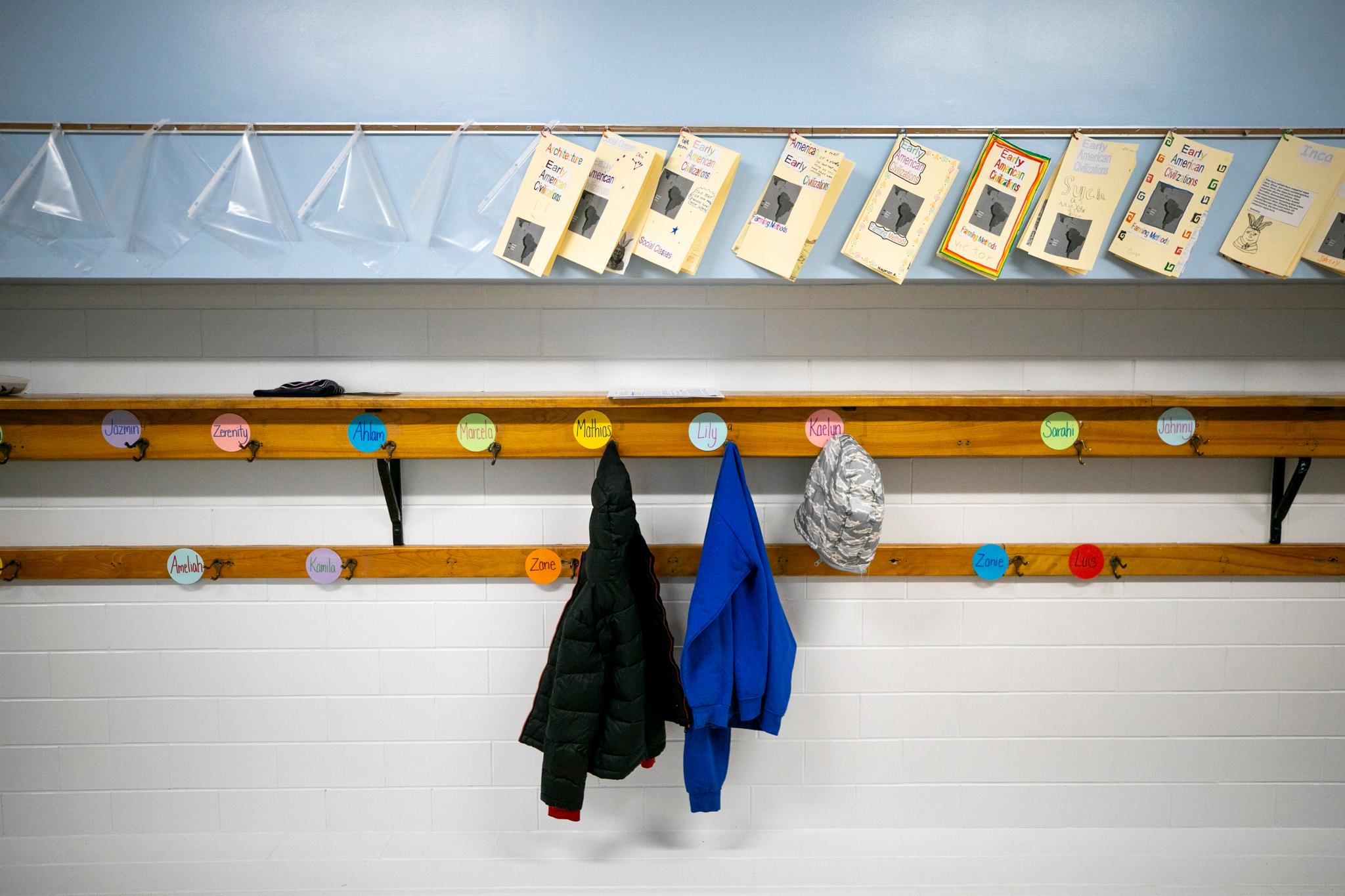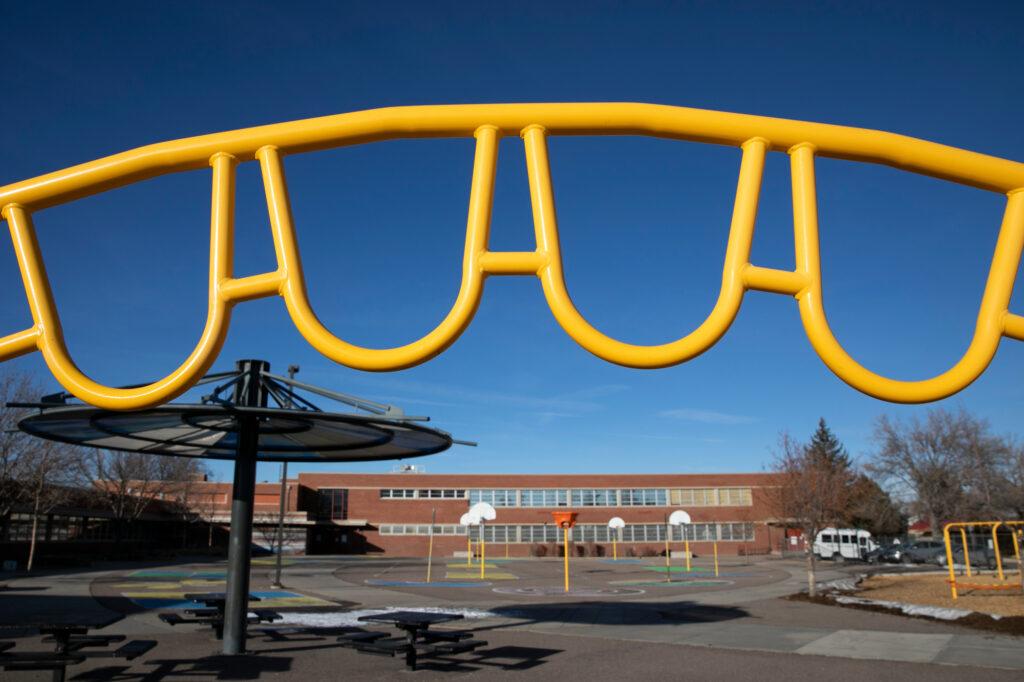
Many states require 180 days of instruction, that’s kids in a classroom, learning.
Former educator and CPR listener Christine Kindl asked about data she saw from the Pew Research Center showing that Colorado has the shortest school year of any U.S. state, just 160 days.
It seemed like Colorado children were receiving about a month less classroom time than their peers elsewhere in the country. We investigated.
What’s up with Colorado’s 160-day minimum?
The majority of states — 38 — set a minimum number of days for the school year. About 27 of those mandate 180 instructional days. The study said seven states set minimums at less than 180 days, with Colorado the lowest at 160. Four states require more. Kansas requires 186 days through 11th grade.
While it seems like Colorado students are getting short-changed, it’s important to look at the instructional hours mandated. Here’s how Colorado stacks up:
The Pew study shows that the average for fourth graders is 997.8 hours. Colorado fourth graders are at 990 hours, about eight hours less.
What about older students? Among states that have minimum hour requirements (38), the average for 11th graders is 1,034.8 hours per year. Colorado requires 1,080 per year. That’s about a week and a half more of school, based on six hours of instruction time per day.
So, Colorado is not that different from the rest of the nation, and one could even argue older kids are getting more education here.
The U.S. patchwork quilt of school time requirements that has graduating seniors in Maryland required to attend high school for 30 percent longer than students in Alaska, Florida and Connecticut is very different from most countries where a central governing body sets national education policies.
How did Colorado set the 160 minimum?
We don’t know that (let us know if you know) but the statute has been in place since 1963.
Some states separate how many hours districts must schedule versus operate
Colorado is one of those. One reason? Snow days!
For example, Colorado’s secondary schools must schedule 1,080 but must actually provide 1,056 hours. In elementary school, it’s 990 hours versus 968. Schools are allowed to reduce the number of instructional hours for several reasons: parent/teacher conferences, staff training, and closings “deemed by the board to be necessary for the health, safety, or welfare of pupils.” (Snow days!)

Another thing to remember, 160 days is the minimum. Many school districts build in extra days.
“Districts typically will have many more days than that if they're a five-day week so it's not unusual to have 173 or 175 days,” said Jennifer Oakes, a district operations special adviser with the Colorado Department of Education.
Here is a guide to instructional hours.
What counts as part of the “instructional day”?
The main thing you need to know is an “instructional day” is whatever’s being done has to be open to all students in a grade level. The instructional day starts when the first scheduled period begins. But if there are periods that start before the arrival of scheduled bus routes to the school, they are not part of the instructional day.
Recess and breaks can be included as well as breakfast or “healthy snacks” eaten during class times. But if class time stops while students go pick up and eat their breakfast, it doesn’t count.
FYI, lunch is not part of the instructional day. Passing periods including from a class to lunch are part of the instructional day but passing between the end of lunch and the next class is NOT part of the instructional day.

“This is a way to make it more consistent throughout the state, regardless of how the class periods and bill schedules are structured,” said Oakes.
What happens if a school falls out of compliance?
It’s up to districts to ensure that they are in compliance with instructional hour rules, said Oakes. If they’re worried about falling below, they can ask for a waiver from the state. If a district has more snow days than planned, they need to make a good-faith effort to make up for lost instruction.
Many Colorado schools and districts are in session less than 160 days
Schools must get approval to be in session less than 160 days. About 133 of Colorado's 178 districts have at least one school on a four-day school week. But even those schools must still meet the minimum instructional hours. The state’s low funding of education has forced many districts that were losing educators to higher-paying districts to opt for a four-day week as a way to attract teachers.
Is there a certain amount of instructional time required for different subjects?
Only for physical education. Generally, if a student goes to school full time, five days a week, they need a minimum of 600 minutes.
Is there a debate in Colorado about the short school year (160 days)?
Not an active, vocal one at the moment but that doesn’t mean everyone is pleased about it. Some parents think the school year is too short. And so do some superintendents, including the leader of the district with the highest graduation rate, Don Haddad at St. Vrain Valley School District.
“The data show the longer a child goes through the system with shortened days and shortened weeks and shortened years, it's a compounding effect,” he said. “You look at the test scores over one year and you may not see something, but then you look at it after eight years and you realize that what they have lost in eight years is an entire year's worth of education.”
He said for students to compete at a global level, they need more high-quality instruction more consistently. Haddad points to research that shows when there are time gaps in learning— like summer, winter or spring break —students fall back. In fact, Haddad did his doctoral dissertation on high school schedules and the impact of continuity on college entrance exam scores.

“What you see clearly is when you go for periods of time without that continuity, it's every bit as damaging to the learning process as reduction of the time itself.”
While two-thirds of Colorado school districts have adopted four-day school weeks, St. Vrain is going in the opposite direction. They’ve added an optional month of June for thousands of K-8 students and have added after-school and Saturday programs.
“The kids flock to it,” he said. “This notion that the kids are looking for all this time off, I think it is a myth. I think if you provide the right experiences, they love coming.”
The district has about seven different revenue streams including millions in grants and investments to help pay for the additional time.
4-day school weeks and a call for action
School districts that have made the switch prefer it to a five-day week and few are switching back. Some studies show teachers, families and students prefer it because they think it allows for more planning time, family time and improves student behavior. But the Education Commission of the States analysis shows there is little evidence confirming those benefits.
A local analysis from the Keystone Policy Center shows the trend towards four-day school weeks shows budget savings are negligible to nonexistent and have slightly lower student achievement on average.
“The concern is, is that they're learning slightly less every year that it has a cumulative impact over time,” said Van Schoales, senior policy director at Keystone Policy Center.
Schoales said the last time state lawmakers examined instructional hours was about 40 years ago. Since then, the state has adopted academic standards for what students should know.
“We think that it's a good idea for the state to take a look at our guidelines and laws around time and instruction and if they make sense for what the expectations are in 2025 for what kids should be learning.”
He also cautions that while the amount of time kids are in school is an important factor, there are many other variables like the quality of instruction that are more important.








